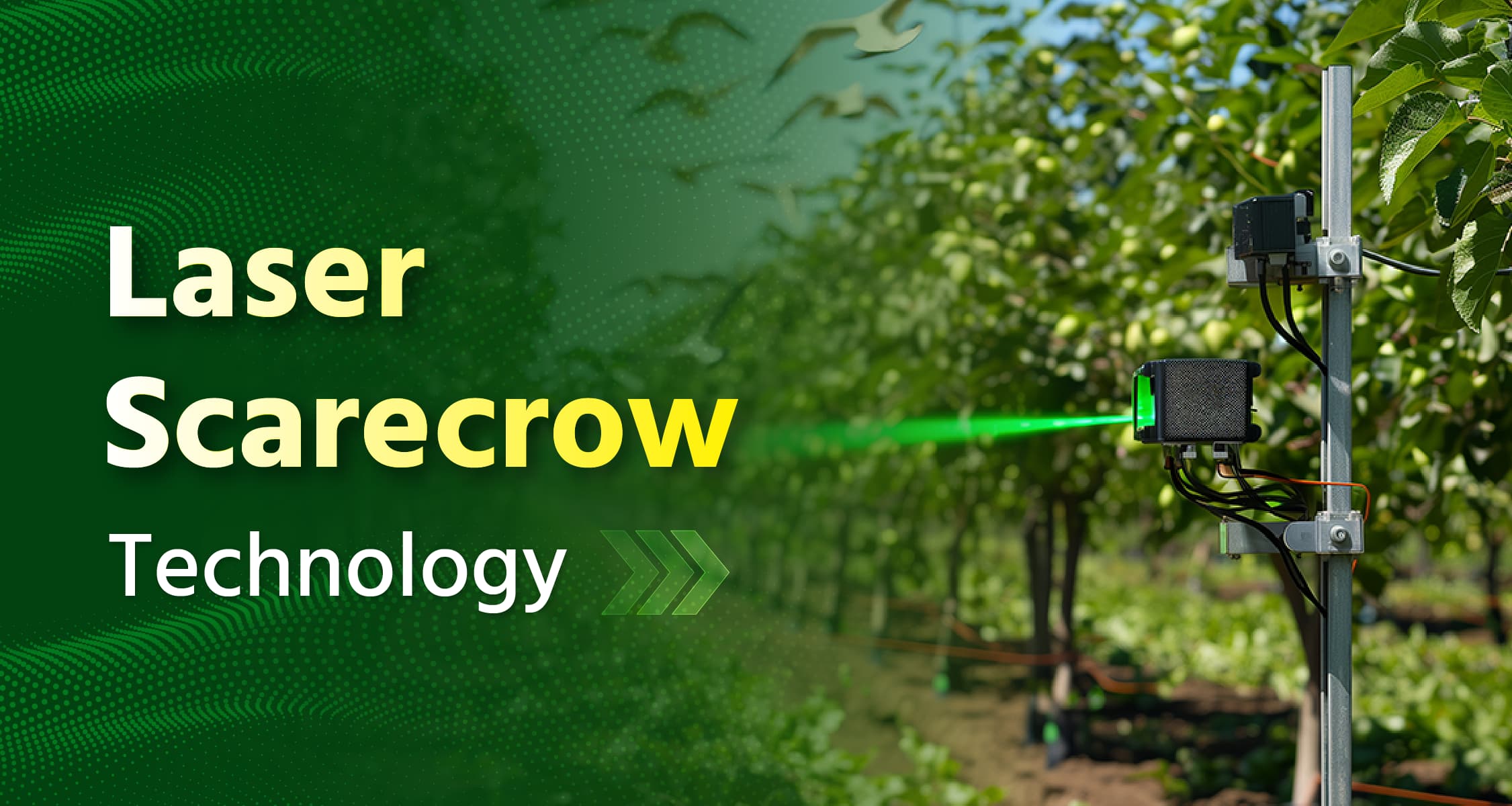Laser Scarecrow Technology

Some common birds that damage crops in India include crows, pigeons, parrots, and many others. Birds can harm crops in various ways in the fields. The damage caused by birds can result in significant economic losses for farmers, especially small-scale farmers who rely on their crops for their livelihood. To keep birds away from the fields, farmers often use nets, bird-repellent devices, and sound equipment. However, with continuous innovations in the agricultural sector, a modern technique - the laser scarecrow was invented for scaring away birds. This is also referred to as laser scarecrow technology. Through this post, we will go through a detailed overview of the damage caused by birds to crops, methods to repel birds, the benefits of laser scarecrow technology, and the challenges faced in using this technology.
What is Laser Scarecrow Technology?
Laser Scarecrow Technology is a device used in agriculture to deter birds. This technology uses laser beams to scare birds away from fields. It works by projecting laser beams across the agricultural area, creating a moving light pattern. Birds perceive this laser pattern as a physical threat. Sensing danger from the laser pattern, the birds fly away from the fields and crops. Laser Scarecrow Technology is considered an environmentally friendly and humane method of bird control, as it does not harm the birds or the environment. It is also a cost-effective alternative to traditional bird control methods, such as nets or chemical repellents.
Damage Caused by Birds to Crops
Birds can cause significant damage to crops during the fruiting and ripening stages. They may peck on fruits, eat seeds, and damage leaves, leading to reduced crop yield and quality. Additionally, birds can sometimes increase the risk of certain infectious diseases in crops.
Laser Scarecrows Advantages in Agriculture
- Effective Bird Control: Laser scarecrow technology is highly effective in scaring away birds that damage crops and keeping them away from fields.
- Environmentally Friendly: Traditional bird control methods use chemicals or physical barriers, which can harm birds. In contrast, laser scarecrow technology is environmentally friendly. It does not harm birds or other wildlife and leaves no harmful residues in the soil or water, ensuring no adverse impact on the environment.
- Cost-Effective: Laser scarecrow technology can prove to be a cost-effective bird control method in the long run. While initially, laser scarecrow cost may be higher than traditional methods, it requires minimal maintenance and has a long lifespan. This allows for its use over many years, making it cost-effective.
- Easy to Use: Laser scarecrow technology is easy to use and can be operated remotely. It can be programmed to turn on and off at specific times and can cover a large area with minimal effort.
- Versatile: Laser scarecrow technology can be used in various agricultural settings, including orchards, flower cultivation, vegetable fields, and other crop farms. It can also be used to scare away animals like rabbits, deer, and monkeys.
Laser Scarecrows Disadvantages in Agriculture
- High Initial Cost: The initial cost of purchasing and installing laser scarecrow technology can be high, which may pose a barrier for small farmers. However, it proves to be cost-effective in the long run.
- Technical Knowledge: It has often been observed that small or rural farmers have limited knowledge of modern technologies. This can make it somewhat difficult for them to use this technology. Hence, they need proper training to use the technology effectively.
- Limited Effectiveness in Adverse Weather Conditions: Laser scarecrow technology may not be as effective in adverse weather conditions such as heavy rain, fog, or snowfall. This can limit its effectiveness in areas with unpredictable weather patterns.
- Limited Coverage Area: The laser scarecrow technology has a limited coverage area, meaning that multiple units may be needed to cover large agricultural fields. This can increase the overall cost for farmers.
- Risk of Eye Damage: If not used correctly, laser beams can be harmful to human eyes. Farmers and workers operating the laser scarecrow technology need to be trained on how to use it safely to avoid any potential eye damage.
- Limited Impact on Certain Bird Species: Some bird species may not be affected by laser scarecrow technology, meaning that other bird control methods may need to be used in conjunction with laser scarecrow technology to achieve effective bird control.
Were you already familiar with the laser scarecrow technology, and would you like to use it in the near future? Share your answers and experiences with us through comments. For more information on modern technologies related to agriculture, follow the 'Krishi Tech' channel now. Also, don't forget to like this post and share it with the fellow farmers.
Frequently Asked Questions (FAQs)
Q: What are laser scarecrows?
A: Laser scarecrows are devices that use laser beams to scare birds and other animals away from crops. Birds are frightened by the shape created by the laser and fly away, preventing any damage to the crops.
Q: What are scarecrows used for?
A: Scarecrows are used in agriculture to scare birds and other animals away from crops. Traditionally, they are made from straw or other materials and resemble a human figure. However, now there are devices available in the market like laser scarecrow technology to deter birds.
Q: What can be done to scare away birds?
A: In India, there are several methods to scare birds away from crops. Common methods include using scarecrows, reflective tapes or shiny objects, nets, and bird-repellent sprays. Additionally, planting crops that birds do not prefer can help reduce bird damage. You can also use laser scarecrow technology in the field, which is an excellent option for scaring away birds.
Please login to continue

Get free advice from a crop doctor
